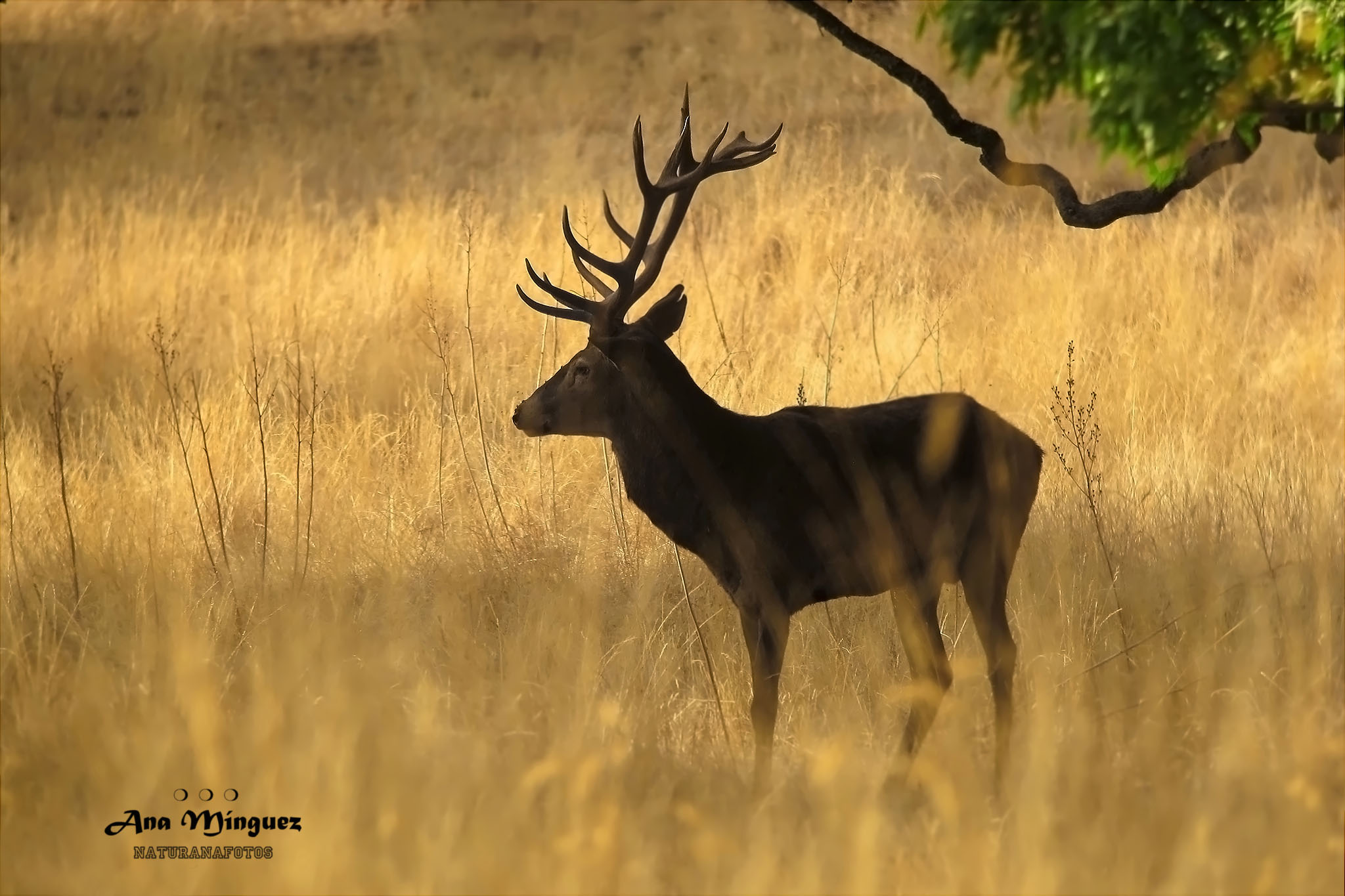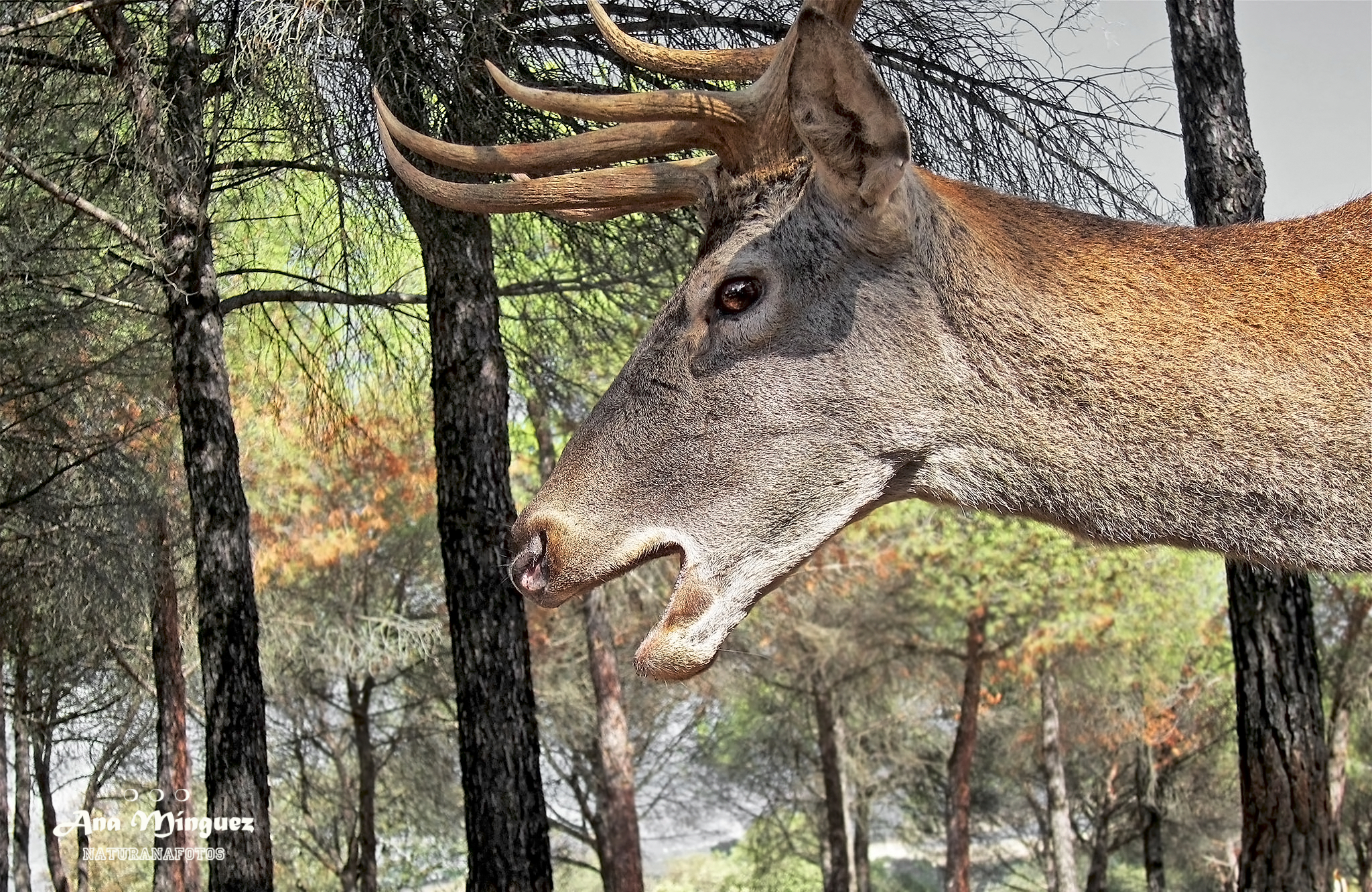The Deer Rut: Nature's Great Autumn Spectacle

The end of the summer season brings shorter days, cooler weather, and more frequent storms – and in the Iberian mountains, it sets the scene for one of the most spectacular sights in European nature: the deer rut.
It is the mating season of our largest ungulate: the majestic red deer (Cervus elaphus). The males can grow to the size of a donkey and weigh over 200 kilos, and during the rutting season, the dominant stags defend their status within the group, their hegemony over the females, and their precedence in terms of reproduction.

A stag in the countryside. Photography: Ana Mínguez
This involves a range of behaviours, such as digging up the ground with their antlers and filling the holes with their bodily fluids, tearing bark from the trees, wallowing in mud, and bellowing so loudly, the sound echoes around the mountains at dawn and dusk.
This is how they mark their territory and assert their dominance over the other stags. They make their presence known to the young aspiring leaders of the group, warning them that if they should press on with their challenge, they'll have to face the dominant stag in combat. This usually happens several times throughout the day.
During the altercation, the leader and challenger shove each other, using their powerful antlers to block the opponent and force him to retreat. This will continue until one stag has chased the other out of the area where the hinds (or females) have gathered. It is nature's implacable way of exercising natural selection, ensuring that those who end up reproducing pass on the best genes.
Once the hierarchy has been established, the stags turn their attention to the hinds. Surrounded by their one-year-old fawns, the females stay away from the combats. They are only fertile for a day, which means the winning stags must take care of their genetic mandate with some urgency. As a result, they will leave a few hinds to less fortunate males.
Once they have completed the mating ritual, the dominant stags retire to the deep woods to continue their solitary life, far from the other deer. The hinds and their young, on the other hand, remain in a herd, which will stay together throughout the winter.

A deer in the forest. Photography: Ana Mínguez
The gestation period lasts eight months, which means that if everything goes well, the new offspring will be born before the summer. The previous year's juveniles will begin their learning period and eventually develop into contenders.
The rut usually ends in late October (although climate change is altering this calendar) when the days get shorter and the cold grows more severe.
The red deer is seeing an unprecedented population explosion in Spain and as a result the species is returning to most of the territories from which it had previously disappeared. As a result, we have several opportunities to get an up-close look at the rutting season spectacle in most parts of the country.
For example, in the Monfragüe National Park in Extremadura, the Cazorla, Segura y Las Villas Nature Park in Andalucia, the Boumort Nature Reserve, or the nature parks of Cadí Moixeró and Alt Pirineu in Catalonia.
Other good sites include Palentina mountain, the Sierra de la Culebra in Zamora, or the Demanda mountains in Burgos, Castilla y Leon. Then there are the magnificent enclaves of the Redes Nature Park in Asturias or Saja-Besaya, Liébana, and Campoo in Cantabria. The Ezcaray mountains in Rioja, the Gorbeia massif in Álava, or the Selva de Irati in Navarra are also wonderful places to witness the rut.
The basic rules for observing the deer rut without disturbing the animals at such a crucial point for the species begins with a stop at the visitors centre of the nature reserve to get information. Make sure to always follow the instructions of forest and park rangers, stick to the signage and rules, and maintain a responsible and respectful attitude towards nature at all times.
That said, the best option for ensuring a successful sighting is to hire a local guide to take us to the best spots to observe the deer rut. By doing so, we're making the most of our time while avoiding the risk of potentially breaking any rules. At the same time, we're supporting the economic activity linked to sustainable tourism in the rural world.
